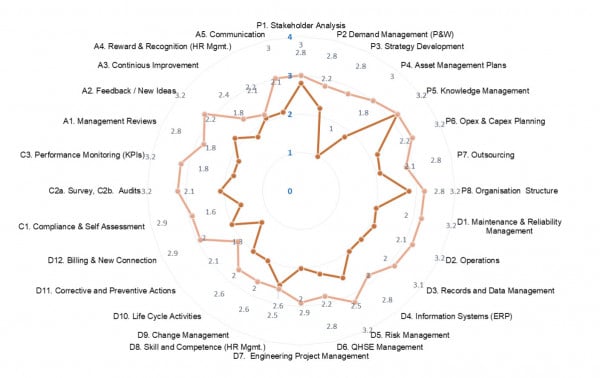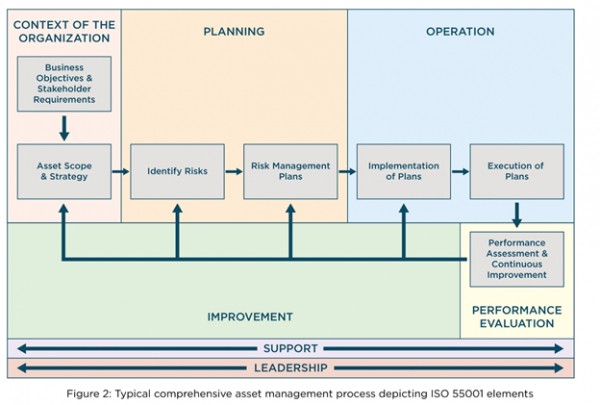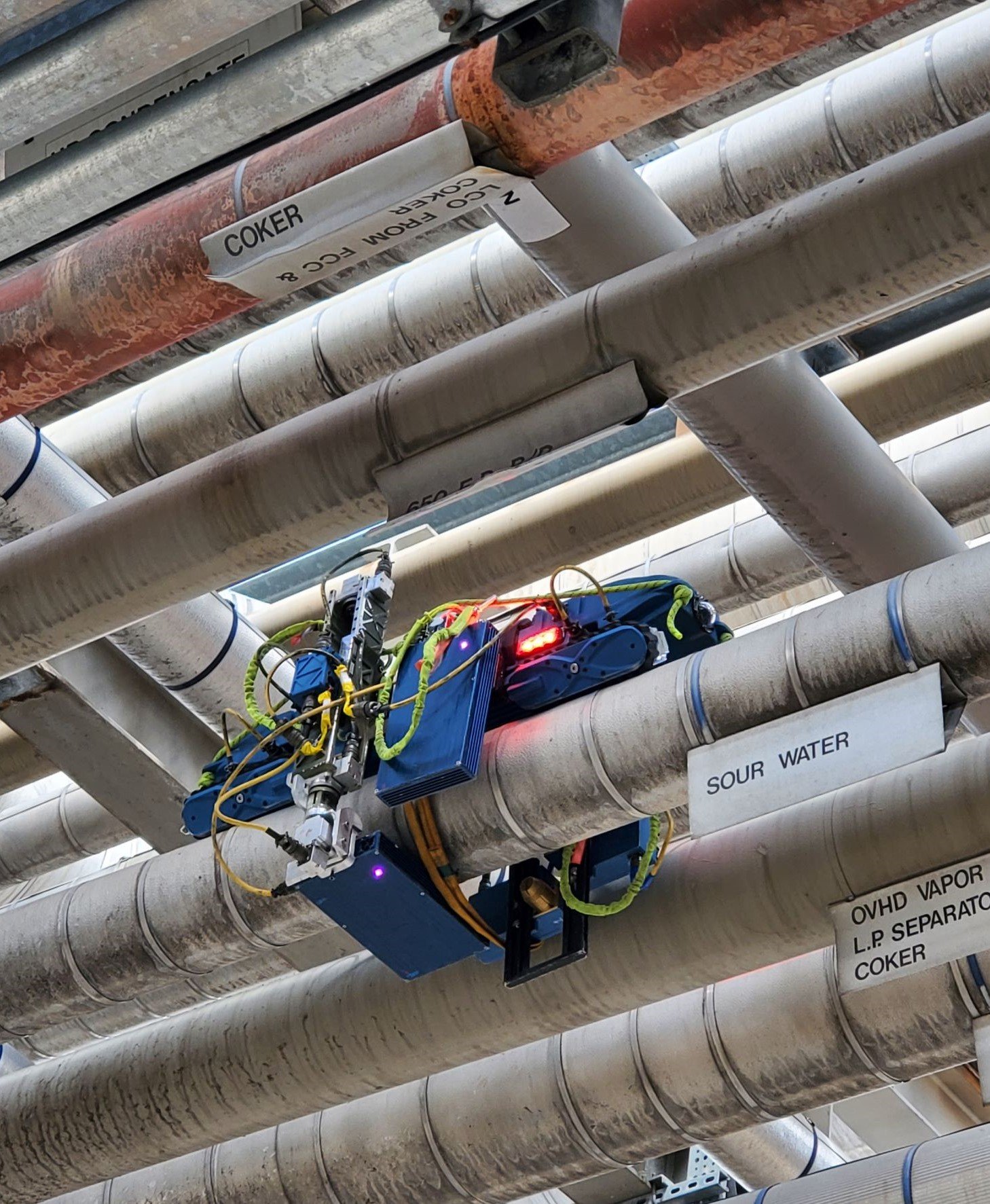The International Organization for Standardization (ISO) is an independent, non-governmental group that develops and publishes standards based on professional research to ensure safety, efficiency, reliability in various situations and industries around the world. Based in Geneva and composed of 165 member countries, the ISO is the planet’s largest creator of voluntary international standards. It was started when delegates from 25 countries met in London in 1946.
The ISO has published more than 19,500 standards on various topics ranging from the risk management governing ISO 31000, to ISO 14000 environmental standards, to the ever popular ISO 9000 quality management standards. Some of the most important to our industry though are ISO 55000, ISO 9000, and ISO 19011:2011.
ISO 55000, Asset management - Overview, Principles and Terminology
ISO 55000:2014 "Asset management - Overview, principles and terminology" is a standard developed and published by ISO that provides an overview of asset management, its principles and terminology, and the expected benefits from adopting asset management. The project was originally started in London in 2010 and the standard was first released on January of 2014. It is still in its first edition.
The general purpose of this standard is to protect the physical assets of a facility. This can include production machinery, protective functions, reputation, intellectual property, and branding, among others.
ISO 55000 is actually made up of three separate, yet related standards. There are ISO 55000, ISO 55001, and ISO 55002. ISO 55000 serves as an overview of asset management, details the principles of the asset management, and gives a list of all terms and definitions related to the topic. ISO 55001 provides the actual requirements for the implementation of an asset management program at a facility. Finally, ISO 55002 details how to actually implement the processes described in ISO 55001.
ISO 55000 is a very versatile standard and can be applied to all types of assets and by all types and sizes of organizations. It can be used in tandem with other ISO standards that relate to management systems. Standards that are compatible with ISO 55000 include: ISO 9001 - Quality management systems - Requirements, ISO 14001 - Environmental Management Systems - Requirements, and ISO 31000 - Risk Management. Compared to other standards, more of the burden for safety is placed on management, rather than on employees.
PAS 55
ISO 55000 was developed based on PAS 55, “Optimal management of physical assets,” a standard originally developed by the British Standards Institution (BSI) and a group of 50 organizations from 10 different countries and 15 sectors of industry. Compared to PAS 55, ISO 55000 offers a more comprehensive asset management focus and isn’t focused solely on physical assets.
ISO 9000, Quality Management Systems
ISO 9000 is a series of related quality management and assurance standards developed and published by ISO and designed to help organizations document and improve their quality management systems. The ISO 9000 standards were originally published in 1987 and have been periodically updated over the years.
Some of the guidelines include standards on how to be customer focused and implement top managerial qualities. The standards apply to a company's quality management system, not its product or service, and so are applicable for almost any company.
This family of standards includes:
- ISO 9001:2015 - sets out the requirements of a quality management system
- ISO 9000:2015 - covers the basic concepts and language
- ISO 9004:2009 - focuses on how to make a quality management system more efficient and effective
- ISO 19011:2011 - sets out guidance on internal and external audits of quality management systems.
ISO 9000 is one of the most widely adopted and fastest growing quality initiatives in the world. ISO 9000 standards have been adopted by hundreds of thousands of companies worldwide and continue to grow. This growth is especially evident in countries like China, Japan, Germany, and Italy.
ISO 19011:2011, Guidelines for auditing management systems
ISO 19011:2011, Guidelines for Auditing Management Systems, is a standard developed and published by ISO and intended to provide guidance for auditing management systems. It was published in November of 2011 and is the second edition of the standard. It is a part of the larger ISO 9000 and ISO 14000 collections.
It includes information on the principles of auditing, managing an audit program, and conducting management system audits. It also has information on how to evaluate the competence of individuals involved in the audit process, including the person managing the audit program, auditors, and audit teams. ISO 19011:2011 is primarily meant to apply to organizations that need to conduct audits, internal or external, of their management systems.
Related Topics
- API 560 - Fired Heaters for General Refinery Service
- API 579-1/ASME FFS-1 - Fitness-For-Service (FFS)
- API 594 - Check Valves: Flanged, Lug, Wafer, and Butt-Welding
- API 620 - Design and Construction of Large, Welded, Low-Pressure Storage Tanks
- API 650 - Welded Tanks for Oil Storage
- API 660 - Shell-and-Tube Heat Exchangers
- API 661 - Petroleum, Petrochemical, and Natural Gas Industries Air-Cooled Heat Exchangers
- API RP 1160 - Managing System Integrity for Hazardous Liquid Pipelines
- API RP 1173 - Pipeline Safety Management Systems
- API RP 1176 - Assessment and Management of Cracking in Pipelines
- API RP 1188 - Hazardous Liquid Pipeline Facilities Integrity Management
- API RP 538 - Industrial Fired Boilers for General Refinery and Petrochemical Service
- API RP 571 - Damage Mechanisms Affecting Fixed Equipment in the Refining Industry
- API RP 572 - Inspection of Pressure Vessels
- API RP 573 - Inspection of Fired Boilers and Heaters
- API RP 574 - Inspection Practices for Piping System Components
- API RP 575 - Inspection Practices for Atmospheric and Low Pressure Storage Tanks
- API RP 576 - Inspection of Pressure-Relieving Devices
- API RP 577 - Welding Processes, Inspection, and Metallurgy
- API RP 578 - Material Verification for New and Existing Alloy Piping
- API RP 580 - Risk Based Inspection (RBI)
- API RP 581 - Risk Based Inspection Technology
- API RP 583 - Corrosion Under Insulation and Fireproofing
- API RP 584 - Integrity Operating Windows
- API RP 585 - Pressure Equipment Integrity Incident Investigation
- API RP 651 - Cathodic Protection of Aboveground Petroleum Storage Tanks
- API RP 75 - Safety and Environmental Management System for Offshore Operations
- API RP 751 - Safe Operation of Hydrofluoric Acid Alkylation Units
- API RP 754 - Process Safety Performance Indicators for the Refining and Petrochemical Industries
- API RP 934 - Materials and Fabrication of Heavy Wall Pressure Vessels for High-Pressure Hydrogen Ser
- API RP 939-C - Guidelines for Avoiding Sulfidation (Sulfidic) Corrosion Failures in Oil Refineries
- API RP 941 - Steels for Hydrogen Service at Elevated Temperatures and Pressures
- API RP 970 - Corrosion Control Documents
- API RP 982 - Inspection and Assessment of Refractory Linings
Relevant Links
Topic Tools
Share this Topic
Contribute to Definition
We welcome updates to this Integripedia definition from the Inspectioneering community. Click the link below to submit any recommended changes for Inspectioneering's team of editors to review.
Contribute to Definition



















